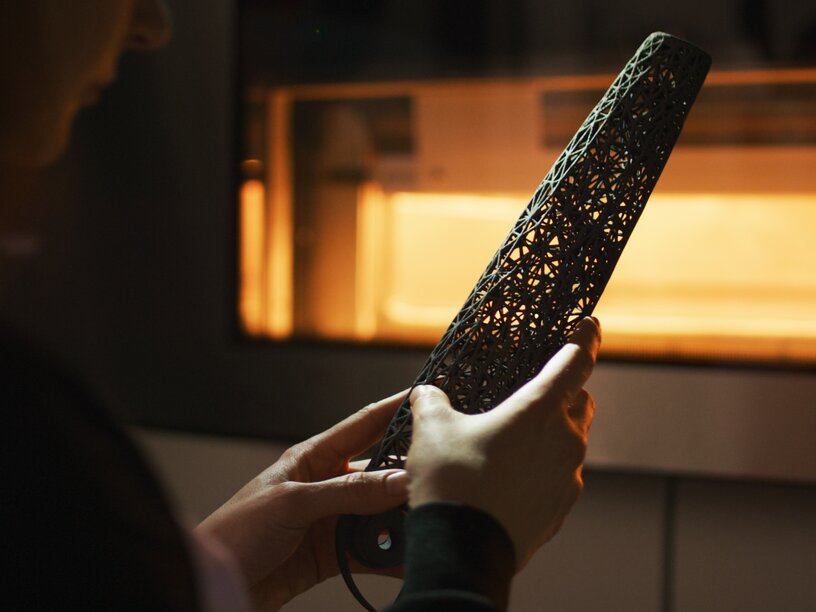
What is Additive Manufacturing?
Definition & Technologies
Additive Manufacturing, Laser-Sintering and Industrial 3D Printing: How Does Additive Manufacturing Work?
In additive manufacturing, material is applied layer by layer in precise geometric shapes based on a CAD model. In contrast, conventional manufacturing processes typically involve milling, carving or otherwise removing material to create an object. The terms 3D printing and additive manufacturing are often used synonymously. Strictly speaking, however, a distinction must be made: 3D printing is the more colloquial term. Additive manufacturing refers to the general manufacturing process - the production of objects by adding material - under which various production processes such as rapid prototyping, rapid tooling or mass customization can be subsumed.
Additive manufacturing offers significant benefits to a wide range of industries, whether it's the ability for agile product customization, functional integration, or rapid and cost-effective spare parts procurement. EOS offers a variety of metals and polymers to suit each application. Read more about the various processes and materials that EOS has continuously developed and what advantages they offer your company.
Our Future Oriented 3D Printing Technology
At EOS, we work with the additive manufacturing technology of powder bed fusion. In this process, a CAD model is created, virtually cut into thin slices and converted into a file that the 3D printer can read. For the printing process, a thin layer of the desired powder material is applied to a building platform. A powerful laser beam then melts the powder in the exact locations specified by the computer model. A new layer of powder is applied and again fused with the underlying layer by laser. In this way, layer by layer, the finished product is created.
Benefits of Additive Manufacturing
Additive manufacturing can offer your company a significant competitive advantage. On-demand spare parts production directly on site reduces inventory and supply chain constraints. Lightweight designs mean less material, less energy, and less costs. Customization and function integration enable a fast response to customer requirements. We are happy to advise you.
Cost Efficiency: Is Industrial 3D Printing Worthwhile?
Industrial 3D printing can be a cost-effective alternative to traditional manufacturing processes in many areas.
Key cost factors include:
- Produce parts cost-efficiently, even in series production
- Accelerate product development and prototyping to gain a competitive advantage
- Reduce the cost of producing and stocking spare parts by producing them locally on demand
- Completely new product development, beyond tooling or wax models
3D Printing Applications
The original field of application for additive manufacturing was primarily rapid prototyping, with which product development and market launch could be significantly accelerated. In the meantime, however, industrial 3D printing has become an essential part of series production. EOS is one of the pioneers of this development.
Additive manufacturing is opening up new opportunities in demanding industries such as medical, automotive, mobility and aerospace, as well as in mass markets such as lifestyle and consumer goods, industrial and manufacturing. Additive manufacturing offers numerous competitive advantages and creates sustainable foundations for the future. Here are some examples of EOS technology success stories.
Looking for the Right 3D Printer?
We Got You Covered
Our extensive portfolio not only includes 3D printers, accessories and materials for plastic and metal parts. On top of that, we also support you in improving your skills with our free webinars.










